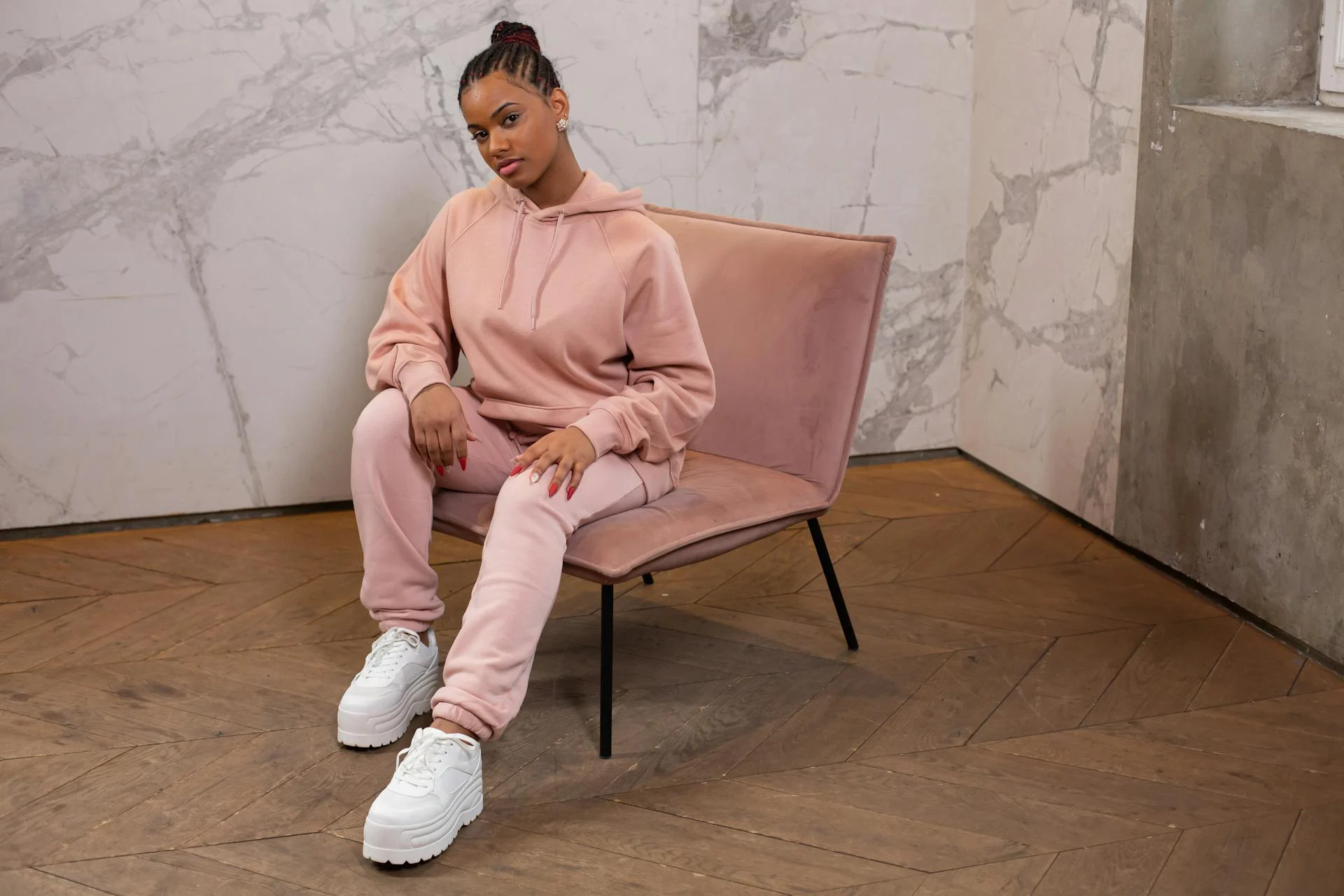
Blog
-
Divest Impex
Tracksuit Manufacturing Process: Key Steps for New Brands

Mins To Read
Table of Contents
ToggleLaunching a new tracksuit line can be an exciting venture. Tracksuits are a versatile wardrobe staple, blending comfort and style for a wide audience. However, navigating the tracksuit manufacturing process for the first time can seem daunting. This guide breaks down the essential steps, offering clarity and actionable advice for new brands looking to turn their vision into quality apparel.
1. Starting Your Tracksuit Brand: What You Need to Know First
Before diving into the nitty-gritty of production, it’s vital to have a solid foundation. The journey from concept to a market-ready tracksuit involves careful planning, design, sourcing, and quality control. Understanding each phase of the tracksuit manufacturing process will empower you to make informed decisions and avoid common pitfalls. This journey requires patience and attention to detail, but with the right approach, creating your own line is entirely achievable.
2. Defining Your Niche: Who is Your Ideal Tracksuit Customer?
Understanding your target audience is paramount. Who are you designing these tracksuits for? Consider factors such as:
- Age and Demographics: Are you targeting teens, young adults, or a more mature audience?
- Style Preference: Will your tracksuits be high-fashion, athletic performance-oriented, casual streetwear, or perhaps for specific groups like custom kids’ tracksuits?
- Price Point: Will they be budget-friendly, mid-range, or premium luxury items?
Answering these questions will shape your design choices, material selection, and overall brand positioning, which are crucial elements of the tracksuit manufacturing process.
3. Designing Your Signature Tracksuit: Key Style and Fit Decisions
With your niche defined, it’s time to focus on design. This is where your brand’s unique identity comes to life. Key design elements to consider for your custom design tracksuit manufacturing include:
- Silhouette: Will it be a classic fit, slim-fit, oversized, or something unique?
- Jacket Details: Hooded or non-hooded, zipper types (full-zip, half-zip), pocket styles, cuff and hem finishes.
- Pant Details: Tapered or straight leg, elasticated or drawstring waist, ankle zippers, pocket placement.
- Branding: How and where will your logo appear? Options include embroidery, screen printing, heat transfers, or custom labels.
- Colorways: Solid colors, color-blocking, or custom prints.
Consider developing distinct lines, such as custom men’s tracksuits and custom women’s tracksuits, which may have different fit and style requirements.
4. Choosing the Best Fabrics for Comfort, Durability, and Style
The fabric choice significantly impacts the look, feel, performance, and cost of your tracksuits. Common options include:
- Cotton Fleece: Soft, comfortable, and warm, great for casual wear.
- Polyester Blends: Durable, moisture-wicking, and often used for athletic tracksuits. They hold color well and resist shrinking.
- Nylon: Lightweight, strong, and water-resistant, suitable for outerwear-style tracksuits.
- Velour: Offers a plush, retro, or luxury feel.
- Scuba/Neoprene: Provides a modern, structured look.
Consider fabric weight (GSM – grams per square meter), breathability, stretch, and care instructions. Sourcing sustainable fabrics is also an increasingly important consideration for new brands. Organizations like Textile Exchange offer resources on various sustainable material standards.
5. Your Blueprint: Creating a Detailed Tech Pack for Manufacturers
A tech pack (technical packet) is one of the most critical documents in apparel manufacturing. It’s essentially the blueprint for your tracksuit, communicating every detail to the factory. A comprehensive tech pack helps ensure your vision for how are custom tracksuits made is accurately realized. It typically includes:
- Technical Sketches: Flat drawings of the front, back, and side views with all seam details.
- Measurements & Size Chart: Detailed measurements for each size you plan to produce.
- Material Specifications: Fabric type, weight, color (Pantone codes recommended), and supplier if known.
- Trim Details: Information on zippers, drawstrings, eyelets, labels, tags, etc.
- Construction Details: Stitch types, seam allowances, and any special construction methods.
- Artwork & Branding Placement: Precise location and specifications for logos, prints, or embroidery.
- Packaging Instructions: How each tracksuit should be folded, bagged, and labeled.
6. Finding the Right Tracksuit Manufacturer: Tips for New Brands
Choosing a manufacturing partner is a crucial step in the tracksuit manufacturing process. You’ll need to decide between domestic or overseas production, each with its pros and cons regarding cost, lead time, communication, and quality control.
When finding a tracksuit factory, consider:
- Experience & Specialization: Do they have experience making tracksuits or similar apparel?
- Minimum Order Quantities (MOQs): Can they accommodate your initial order size?
- Quality Standards & Certifications: What quality control measures do they have? Are they ethically compliant?
- Communication & Transparency: How easy is it to communicate with them? Are they transparent about their processes?
- Pricing & Payment Terms: Are their costs competitive and terms reasonable?
- Full Package Production: Some manufacturers offer full package tracksuit production, handling everything from sourcing materials to finished goods, which can be beneficial for new brands.
Platforms like Divest Impex can provide new brands manufacturing solutions tailored to their needs.
7. The Importance of Sampling: Perfecting Your Tracksuit Prototype
Never skip the sampling stage! Samples allow you to test the fit, quality, construction, and overall design of your tracksuit before committing to bulk production. This iterative process typically involves:
- Prototype (Proto) Sample: The first sample made based on your tech pack to check basic design and construction.
- Fit Sample: Used to verify the fit across different sizes.
- Salesman Sample (SMS): If needed for marketing or pre-sales.
- Pre-Production Sample (PPS): The final approved sample, made with all correct fabrics, trims, and branding, which serves as the gold standard for bulk production.
Review each sample carefully and provide clear feedback to your manufacturer. At Divest Impex, we understand the importance of this stage, and you can order your sample to ensure every detail aligns with your vision before full-scale manufacturing begins.
8. Navigating Production: MOQs, Lead Times, and What to Expect
Once your pre-production sample is approved, it’s time for the bulk tracksuit production steps. Key aspects to manage during this phase include:
- Minimum Order Quantities (MOQs): This is the smallest number of units a factory is willing to produce per style or color. Negotiate this based on your brand’s needs and the factory’s capacity.
- Lead Times: This is the time from placing your order to receiving the finished goods. It can range from a few weeks to several months, depending on order complexity, quantity, fabric sourcing, and the factory’s schedule. Plan accordingly.
- Production Schedule: Get a clear timeline from your manufacturer for each stage: material sourcing, cutting, sewing, finishing, and packing.
- Communication: Maintain regular communication with your factory for updates and to address any issues promptly.
9. Ensuring Top Quality: Implementing a Quality Control Process
Quality control (QC) is essential to ensure your tracksuits meet your brand’s standards and customer expectations. QC should happen at multiple stages:
- Raw Material Inspection: Checking fabrics and trims upon arrival at the factory.
- In-Line Inspection: Monitoring quality during the cutting and sewing processes. This helps catch errors early.
- Final Inspection: A thorough check of finished garments before they are packed and shipped. This usually involves checking measurements, stitching, fabric quality, branding application, and overall appearance against the approved PPS.
You can hire a third-party inspection service, rely on the factory’s internal QC (with clear guidelines from you), or conduct inspections yourself if feasible.
10. Understanding the Costs: Budgeting for Tracksuit Manufacturing
A clear understanding of all costs involved is crucial for pricing your tracksuits competitively and ensuring profitability. Key cost components in the tracksuit manufacturing process include:
- Development Costs: Design, tech pack creation, pattern making, initial sampling.
- Materials: Fabric, zippers, drawstrings, labels, tags.
- Cut, Make, Trim (CMT) Labor: The cost of cutting the fabric, sewing the garments, and adding trims.
- Finishing & Packaging: Ironing, folding, bagging, boxing.
- Shipping & Logistics: Freight from the factory, customs duties, taxes, and local delivery.
- Contingency: Always budget a small percentage for unforeseen expenses or delays.
Get detailed quotes from potential manufacturers like Divest Impex.
11. Getting Your Tracksuits: Shipping and Logistics Essentials
Once production is complete and your tracksuits have passed final inspection, the next step is getting them to your warehouse or distribution center. Key considerations include:
- Freight Options: Sea freight is generally more cost-effective for large volumes but slower. Air freight is faster but more expensive, suitable for smaller quantities or urgent shipments.
- Incoterms: These international commercial terms define the responsibilities of buyers and sellers in shipping (e.g., FOB, EXW, CIF). Understand what your agreed terms mean.
- Customs Clearance: You’ll need to handle customs documentation and pay any applicable import duties and taxes. A customs broker or freight forwarder can assist with this complex process.
- Insurance: Ensure your goods are insured during transit.
12. Staying Compliant: Labeling and Legal Must-Knows for Apparel
Adhering to legal and labeling requirements is non-negotiable for any apparel brand. For tracksuits sold in most markets, mandatory labels include:
- Fiber Content: The percentage of each fiber used (e.g., 80% Cotton, 20% Polyester).
- Country of Origin: Where the tracksuit was manufactured (“Made in [Country]”).
- Care Instructions: Standardized symbols or text explaining how to wash and care for the garment.
- Manufacturer/Importer Identification: Often an RN number in the US.
Ensure your brand name and logo are protected with trademarks. For detailed US labeling requirements, consult resources like the U.S. Federal Trade Commission (FTC) guidelines on textile labeling.
13. Key Considerations for Launching Your New Tracksuit Line
While this guide focuses on manufacturing, keep your launch strategy in mind throughout the process. High-quality manufacturing directly impacts your brand’s reputation and customer satisfaction. Consider:
- Product Photography: Invest in professional photos of your tracksuits for your website and marketing materials.
- Marketing & Sales Channels: How will you reach your target audience? (e.g., e-commerce store, social media, retail partnerships).
- Inventory Management: Ensure your stock levels align with your launch plans and sales forecasts.
- Customer Service: Be prepared to handle inquiries and provide excellent post-purchase support.
A well-executed manufacturing process ensures you have a product you’re proud to sell.
14. Frequently Asked Questions About Tracksuit Manufacturing for New Brands
How much does it typically cost to manufacture a tracksuit?
The cost varies significantly based on fabric quality, design complexity, order quantity (MOQ), trims, and the manufacturer’s location and expertise. It’s best to get detailed quotes from several potential manufacturers based on your tech pack (see Section 10 for cost components).
What is a typical Minimum Order Quantity (MOQ) for tracksuits?
MOQs can range from 50-100 units per style/color for smaller or domestic factories to 500-1000+ units for larger overseas operations. Some manufacturers, like Divest Impex, may offer flexibility for new brands.
How long does the entire tracksuit manufacturing process usually take?
From initial design and sampling to final delivery, the process can take anywhere from 3 to 9 months, or even longer. Factors include design complexity, sampling rounds, fabric sourcing, production volume, and shipping times.
Can I use sustainable or eco-friendly materials for my tracksuits?
Yes, absolutely! Many manufacturers now offer options for organic cotton, recycled polyester, and other sustainable fabrics. Discuss these requirements with potential factories early in the process (see Section 4).
Do I need a tech pack if my design is simple?
Yes. Even for simple designs, a tech pack is crucial. It minimizes misunderstandings, ensures consistency, and protects both you and the manufacturer by clearly defining all specifications (see Section 5).
Newsletter
Subscribe my newsletter to get the latest posts delivered right to your email.

